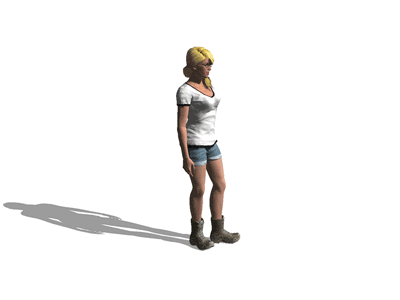England is one of the most nanny-state countries in the world. Somewhere, in anonymous offices, every conceivable accident has been envisaged, legislated and bureaucratised. “It’s health and safety gone mad” is a commonly expressed refrain. However, this potentially oppressive level of mollycoddling is surprisingly subtly applied; in fact, its ubiquity is only really evident when travelling abroad.
Unguarded plummets at the Leaning Tower of Pisa; dodgy electrics in Ecuadorian hotels; minimal formality at Belizean airports: they all come as something of a shock to the travelling Brit, used to protective guard rails and strictly-enforced regulations.
Which is all the more reason why, when you do see a warning sign overseas, you should take particular notice of it. However, this is where the culture of hand-holding puts the Brit as a distinct disadvantage. It is too easy to equate the British warning sign about seagulls with the Japanese warning sign about bears, and treat the potential threat of these two entities with equal weight and indifference.


The fact is I escaped the seagulls at Broadstairs and never did see a bear at Kanazawa, but the same cannot be said for my experience in France.
I was walking the route from Cassis to En-Vau in the Calanques National Park. Close to the start of the route at Port-Miou, I saw a warning sign. It showed a slightly indistinct photo of a wild boar with a warning about sangliers. Translating the notice as best I was able, I gathered that these creatures were not to be fed; not to be approached; not to be touched; nor should they be startled.

I read the warning with more amusement than concern. I had never seen a wild boar in my life; had no expectation of that status quo changing in the near future.
Forty minutes later, it was at the bottom of a short scramble down a rocky slope, close to Port Pin, when I saw my first wild boar. I didn’t spot it until I was only about six feet distant from it. I had already disobeyed one of the warnings––do not approach––even if unwittingly.


Thankfully, it was a hot morning. The boar was more interested in keeping cool in the shade of a pine tree than it was by me. Nevertheless, it was a sobering lesson. As memorable as the encounter was for me, and despite my feeling of privilege to see one of these animals in the wild, it made me realise that some warnings signs are there for a good reason.
© E. C. Glendenny

E. C. Glendenny vows to pay more attention to warning signs in the future.

[…] Oh, and I did I mention that I saw a wild boar? No? Well, I think someone jolly well needs to read my last post: When Warning Signs are Not a Bore. […]
LikeLike